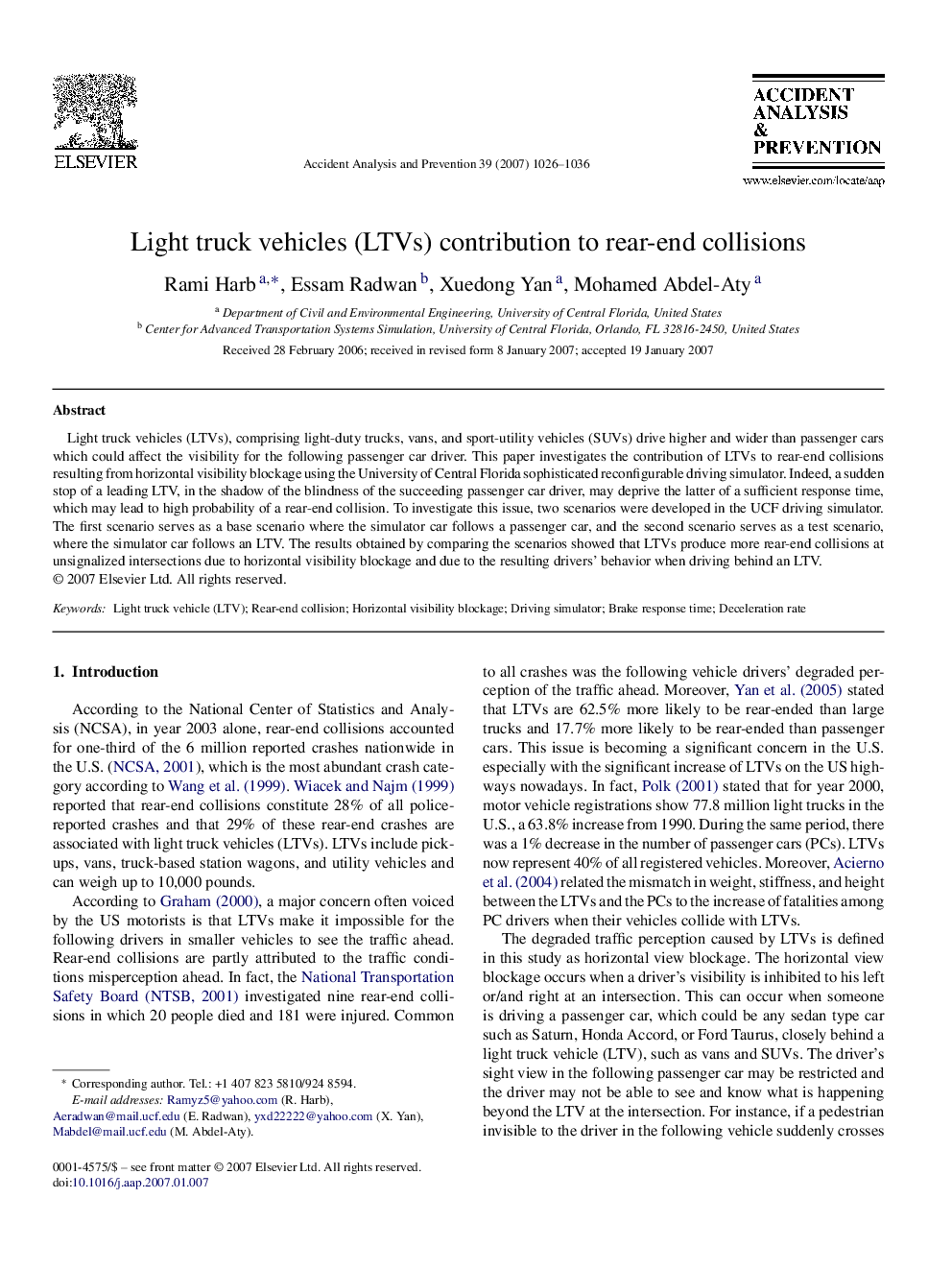| Article ID | Journal | Published Year | Pages | File Type |
|---|---|---|---|---|
| 573733 | Accident Analysis & Prevention | 2007 | 11 Pages |
Light truck vehicles (LTVs), comprising light-duty trucks, vans, and sport-utility vehicles (SUVs) drive higher and wider than passenger cars which could affect the visibility for the following passenger car driver. This paper investigates the contribution of LTVs to rear-end collisions resulting from horizontal visibility blockage using the University of Central Florida sophisticated reconfigurable driving simulator. Indeed, a sudden stop of a leading LTV, in the shadow of the blindness of the succeeding passenger car driver, may deprive the latter of a sufficient response time, which may lead to high probability of a rear-end collision. To investigate this issue, two scenarios were developed in the UCF driving simulator. The first scenario serves as a base scenario where the simulator car follows a passenger car, and the second scenario serves as a test scenario, where the simulator car follows an LTV. The results obtained by comparing the scenarios showed that LTVs produce more rear-end collisions at unsignalized intersections due to horizontal visibility blockage and due to the resulting drivers’ behavior when driving behind an LTV.
